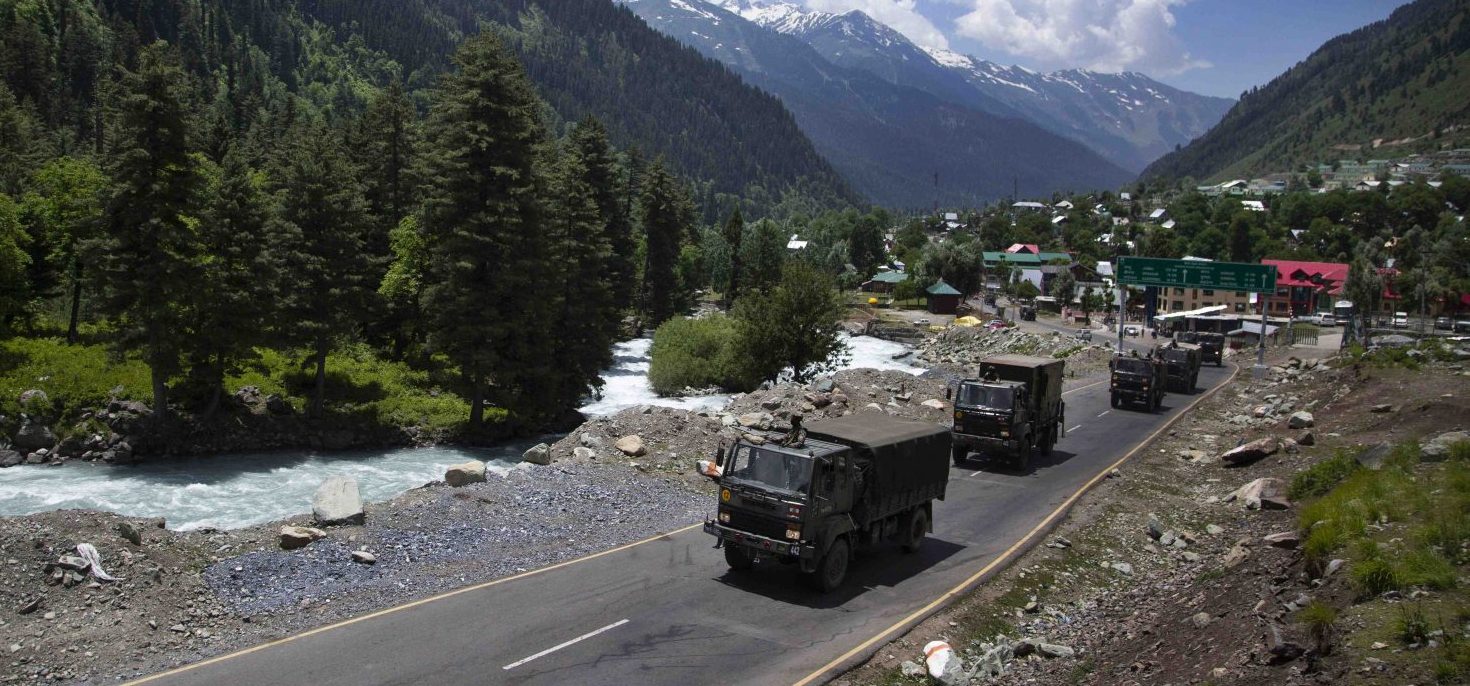~~
Earlier in November, Nepal’s political opposition was more than vocal in highlighting Beijing’s latest territorial seizure worth around 150 hectares along the Himalayan border running between China and Nepal.
According to a provincial legislator of the opposition Nepali Congress Party, the Chinese troops crossed the border and built nine concrete structures about one km (0.6 miles) inside Nepalese territory at Limi, lying in the district of Humla bordering Tibet, and claiming that this small valley “belongs” to them.
The latest Chinese land grab in Nepal carries forward the contemporary reality of the Himalayan borderlands of South Asia. China’s actions bear witness to the regime’s linkages of China’s historical thinking and current strategy for this region, both politically and militarily. The situation today is one where Beijing has managed to galvanize the Chinese army along the entire Himalayan borderlands of South Asia.
This existential reality can be traced back to the era when Chairman Mao Zedong professed the “Five Fingers” strategy following the 1950 annexation of Tibet by China. Mao said, “Tibet is the palm, which we must occupy, then, we will go after the five fingers.” The first among these fingers is Ladakh, followed by Nepal, Bhutan, Sikkim and Arunachal Pradesh.
That China is storming towards these five fingers, furtively at given places, and brazenly on others, could not be any more evident. Seizing 150 hectares of Nepal’s border territory is a portion of the larger unfinished agenda of China’s territorial annexation in South Asia. Beijing’s focus on Nepal primarily centers on the goal of securing Tibetーand keeping the Tibetans-in-exile residing in Nepal under heavy surveillance.
Nefarious Disarming of Nepal’s Political Leadership
As for the Nepalese government, it appears to be in complete denial of the entire episode, with the foreign ministry spokesperson stating, “… it is not true that China has encroached our land and constructed buildings there…” without elaborating any further.
This posture can ostensibly be attributed to China’s deep political influence in Nepal’s domestic politics. After all, it was China’s involvement that managed to ensure that KP Oli continued in office as Nepal’s prime minister when Oli was under severe political opposition at home and appeared all set to be ousted from office in the summer of 2020.
It was during this time that the Chinese ambassador to Nepal, Hou Yanqi, canvassed her connections across Nepal’s political parties. Most strikingly, it was none other than Chinese President Xi Jinping, who reportedly interceded with a 40-minute telephone conversation with the Nepalese President, Bidhya Devi Bhandari, and they jointly managed a fresh lease of life for Oli as PM.
To stabilize his position, and perhaps as a payback to China, Oli chose to raise an amendment bill to include few territories in Nepal’s official map and emblem, without choosing to discuss this matter with India prior to moving his proposal.
Similarly, the silence of the Oli government on the latest 150 hectares land grab by China seemingly appears part of the same tacit understanding emanating from China’s intercession on Oli’s behalf. The elevated levels of Sino-Nepal interaction are being put on display, with multiple projects under China’s Belt and Road Initiative figuring prominently in their bilateral agenda.
Moreover, the mounting presence of Chinese troops around the Lipulekh Pass, located at the India-Tibet-Nepal tri-junction, echoes Beijing’s intent to put a belligerent border strategy in motion in South Asia. In this light, the momentum with which Beijing has operationalized its “Five Fingers” strategy in the Himalayan border states makes it highly plausible for China to turn larger parts along this entire border into the next conflict zone.
The aim? Seizure of larger tracts of territory that could be appended to the already annexed Tibetan Autonomous Region.
RELATED READS:
Has China Created a ‘Red Version’ of its Border with India in Ladakh?
[Bookmark] Indian Ambassador’s Take: How Can Countries Change China’s ‘Belligerent
China Using Cover of Pandemic for Territorial Aggression
In this light, the sudden and precipitous new claim made by China in Bhutan’s eastern sector, which borders the Indian state of Arunachal Pradesh, is a serious cause of concern not just for Bhutan, but for India too.
Since June 2020, China has begun “claiming” the Sakteng Wildlife Sanctuary situated in Bhutan by terming it a “disputed territory”. This implies that a potential future occupation scenario of this sanctuary by China will enable it to deny access to the western flank of Tawang completely. Such a consequence would be much to the military and strategic disadvantage of India.
India faces two critical politico-military scenarios. One, facing an aggressively hostile China directly on its borders. And two, facing a collusive threat of China and its client states which share borders with India. Both Pakistan and Nepal appear to be operating at odds against India in the latter’s immediate neighborhood, in order to fulfill the dictates of their patron, Communist China.
As the world continues to grapple with the Coronavirus pandemic that originated and epicentered in Wuhan, China, more than 1,250,000 worldwide deaths have been reported thus far.
All this while, Beijing’s political leadership is swiftly exploiting the situation on multiple fronts to strengthen its territorial control and sovereignty claims. This is being witnessed currently in three distinct parts of Asia:
- The South China Sea (Southeast Asia),
- The Himalayan borderlands (Nepal, India, and claims in Bhutan, all three of which fall in South Asia), and
- The Senkaku Islands with Japan (Northeast Asia).
China’s present strategic policy for Asia displays territorial revisionism on multiple-fronts. It is a policy that projects territorial assertiveness on issues both on land and at sea, amidst the foundation of economic modernization that it has been able to cement globally. Any regional integration today cannot be complete without factoring in China.
Sensing this indispensability, Beijing has found considerable success in placing strategic disputes in direct relationship to trade interests. Understandably, this equation does not allow for any consensus building apart from China’s perspective, be it bilateral, regional, or global.
RELATED READS:
EDITORIAL | PM Suga’s First Trip Puts Spotlight on Japan and ASEAN Shared Vision for Free and Open Indo-Pacific
As the World Fights the Wuhan Virus, China Installs ‘Jurisdiction’ Over Disputed South China Sea
Australia, Japan Strengthen ‘Quasi-alliance’ to Counter China’s Growing Threat
Historical Claims? China Wasn’t Interested in Senkakus Before Discovery of Possible Oil Deposits
Author: Monika Chansoria
Dr. Monika Chansoria is a senior fellow at The Japan Institute of International Affairs in Tokyo and the author of five books on Asian security. The views expressed here are those of the author and do not necessarily reflect the policy or position of The Japan Institute of International Affairs or any other organization with which the author is affiliated.


















You must be logged in to post a comment Login